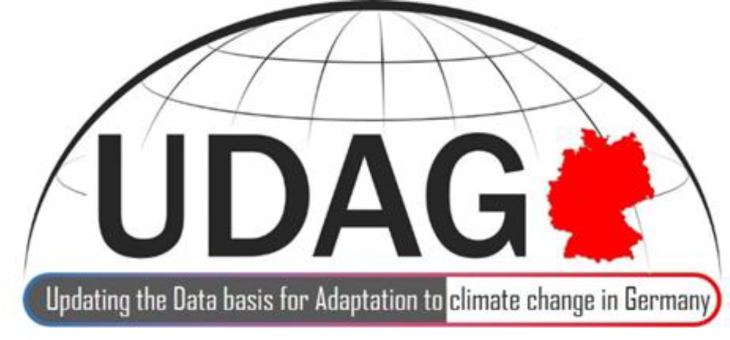UDAG – Updating the Data basis for Adaptation to climate change in Germany
UDAG - How can Germany adapt to the consequences of climate change?

In October 2023, GERICS started into the project UDAG - Updating the Data basis for Adaptation to climate change in Germany. The aim of UDAG is to calculate new high-resolution regional climate projections for Germany and Europe, which will subsequently provide a basis for local and regional climate adaptation strategies.
The joint project UDAG is a consortium led by the German Weather Service (DWD), in which the project partners are the DWD, the Brandenburg University of Technology (BTU), the Karlsruhe Institute of Technology (KIT), the Helmholtz Center Hereon (GERICS/KS) and the German Climate Computing Center (DKRZ). This project is under the project management of the German Aerospace Center (DLR) for environment and sustainability and is funded by the Federal Ministry of Education and Research (BMBF) for the period 2023 - 2026 with 3 million euros.
Previous regional climate projections used for adaptation measures were based on global climate projections created as part of the Coupled Model Intercomparison Project Phase 5 (CMIP5). With CMIP6, the previously used RCP scenarios are completed by SSP (Shared Socioeconomic Pathways) scenarios, which include a socio-economic component. The introduction of modern SSP scenarios and the further development of climate models in the meantime make it necessary to update the regional climate projections for Germany.
Building on the work of the RegIKlim funding measures RegIKlim, UDAG will provide a quality-tested ensemble of regional climate projections for Europe (over approx. 12 km) and for "hydrological Germany" (i.e. including the river basins draining into Germany over approx. 3 km). With this approach, global climate projections from selected global climate models are downscaled to 12 km using the regional state-of-the-art climate model ICON-CLM ((ICOsahedral Nonhydrostatic Weather and Climate Model) - (Climate Limited-area Mode)) for the scenarios SSP1-2.6, SSP3-7.0 and SSP5-8.5. In addition, the empirical-statistical method EPISODES is used to downscale all CMIP6-scenarioMIP projections that provide the necessary input data. In a second step, regional climate projections that cover the bandwidth of the 12 km ensemble are selected and downscaled to 3 km using ICON-CLM. The result is an unprecedented ensemble of convection-permitting climate projections for "hydrological Germany" with high temporal and spatial resolution.
GERICS is working on optimized ICON-CLM configurations as part of a COPAT2 (COordinated Parameter Testing 2) initiative under the leadership of the CLM community as well as on the implementation of ICON-CLM test- and ensemble calculations for Europe and Germany on the high-performance computer Levante of the DKRZ.
To the project website of UDAG (BMBF/Fona; in German)
